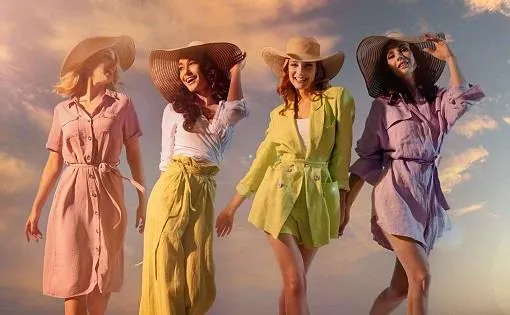The Ever-Evolving World of Fashion: Trends, Culture, and Sustainability
Fashion is more than just clothing — it is a powerful form of self-expression, a reflection of culture, and a booming global industry. From the haute couture runways of Paris to the streetwear scenes in Tokyo, fashion influences how people present themselves and communicate their identities. But fashion is also evolving rapidly, shaped by technology, social movements, and an increasing demand for sustainability.
The Influence of Fashion on Culture and Identity
Fashion has always been intertwined with culture. Traditional attire, colors, and patterns often carry deep meanings and tell stories about a community’s history and values. In today’s globalized world, fashion acts as a universal language that helps people express their personality, mood, and beliefs.
Individual style has become a crucial part of personal identity. Whether it’s minimalist chic, vintage-inspired looks, or bold avant-garde outfits, what people wear sends messages about who they are and what they stand for. Social media platforms like Instagram and TikTok have amplified this phenomenon, turning fashion into a dynamic dialogue where trends spread at lightning speed.
The Business of Fashion
The fashion industry is one of the largest and most lucrative industries worldwide. It encompasses design, manufacturing, marketing, retail, and media. Major fashion capitals — New York, Paris, Milan, and London — host fashion weeks that showcase new collections, set trends, and generate billions in economic activity.
Fast fashion brands like Zara, H&M, and Uniqlo have revolutionized how quickly trends move from runway to store shelves. These companies emphasize affordable and trendy clothing, making fashion accessible to a broader audience. However, this speed and volume come at a cost, which has led to growing criticism over ethical and environmental issues.
Luxury fashion remains a vital segment, characterized by exclusivity, craftsmanship, and heritage. High-end brands such as Chanel, Louis Vuitton, and Gucci maintain cultural relevance by balancing tradition with innovation. They attract consumers who seek timeless pieces and a symbol of status.
Fashion and Sustainability
Sustainability has emerged as a critical concern in the fashion world. The industry is notorious for its environmental impact, from water-intensive cotton farming to pollution caused by synthetic fibers and dyeing processes. It is also one of the largest contributors to global waste, with millions of tons of clothing discarded annually.
Consumers and brands alike are becoming more aware of these issues. Sustainable fashion promotes ethical sourcing, fair labor practices, and environmentally friendly materials. Initiatives such as recycling, upcycling, and slow fashion encourage buying less and valuing quality over quantity.
Many designers now incorporate eco-friendly fabrics like organic cotton, hemp, and Tencel. Innovations in textile technology are also introducing biodegradable and recyclable materials. Meanwhile, secondhand shopping and clothing rental services are gaining popularity, making sustainable choices more accessible.
The Role of Technology in Fashion
Technology has transformed every aspect of the fashion industry. Digital design tools enable faster prototyping and customization. E-commerce platforms have expanded the reach of fashion brands globally, allowing customers to shop from anywhere at any time.
Social media and influencer marketing have reshaped how fashion is promoted and consumed. Influencers and celebrities set trends, collaborate with brands, and create communities around particular styles.
Artificial intelligence (AI) and data analytics are being used to predict trends, manage inventory, and personalize shopping experiences. Virtual and augmented reality offer immersive ways to try on clothes or attend fashion shows remotely.
In addition, 3D printing technology is opening new possibilities for creating innovative garments and accessories with minimal waste.
Fashion and Social Movements
Fashion has always intersected with politics and social change. Clothing choices can be acts of rebellion, solidarity, or empowerment. From the flapper dresses of the 1920s symbolizing women’s liberation to the punk movement’s anti-establishment aesthetics, fashion reflects societal shifts.
In recent years, movements such as body positivity, gender fluidity, and cultural appropriation have sparked important conversations within the industry. Brands are expanding size ranges, using diverse models, and adopting gender-neutral collections to be more inclusive.
Cultural sensitivity and respect have become critical topics, with many brands reevaluating designs to avoid appropriation and celebrate authenticity.
Tips for Building a Timeless Wardrobe
While trends come and go, building a wardrobe based on timeless pieces offers longevity and style that lasts. Here are some tips:
- Invest in quality basics: Classic items like a tailored blazer, white shirt, and well-fitting jeans never go out of style.
- Focus on fit: Clothes that fit well enhance your appearance more than any trend.
- Choose neutral colors: They mix and match easily and suit various occasions.
- Add statement pieces: Use accessories or one bold item to express personality.
- Care for your clothes: Proper washing, storing, and repairing extend the life of garments.
Conclusion
Fashion is a dynamic blend of art, culture, business, and innovation. It reflects who we are, how societies evolve, and what values we uphold. As the industry confronts challenges related to sustainability and inclusivity, it is also embracing new technologies and redefining what it means to be fashionable.
Whether you follow the latest trends or cultivate your unique style, fashion offers endless possibilities for creativity and expression. By making thoughtful choices, you can contribute to a more ethical and sustainable fashion future — proving that style and responsibility can go hand in hand.











Post Comment